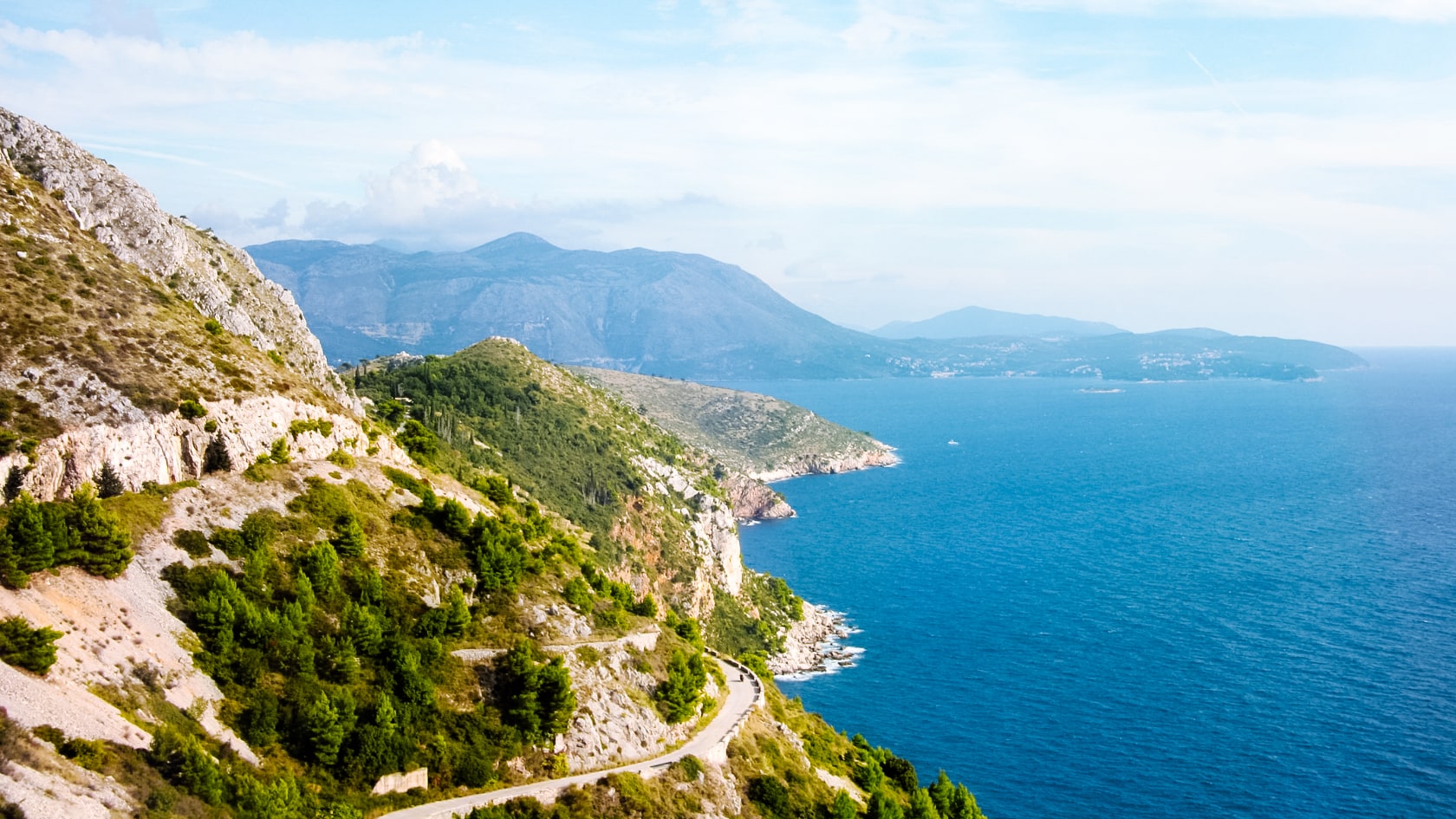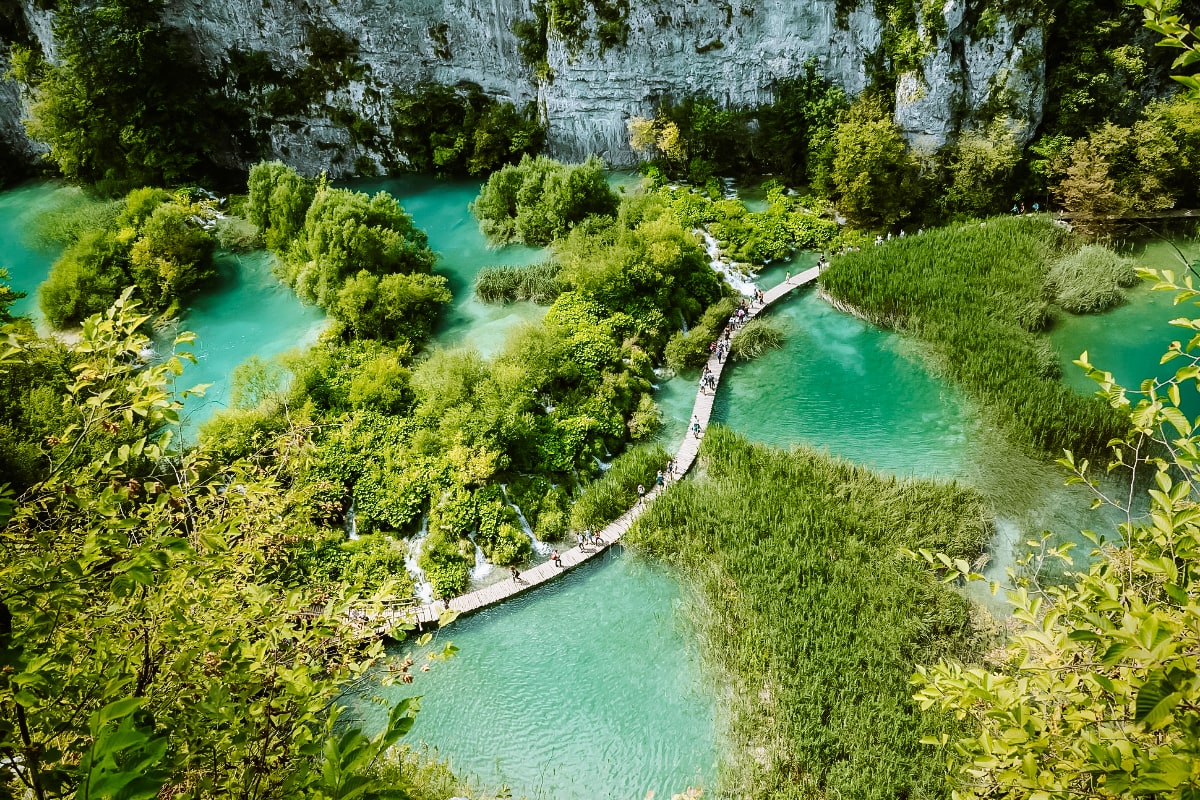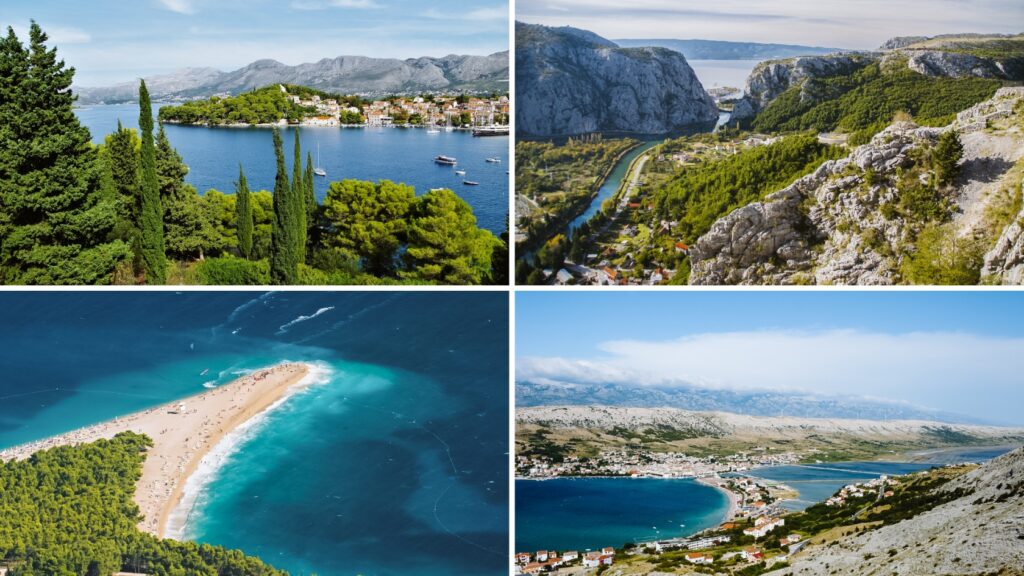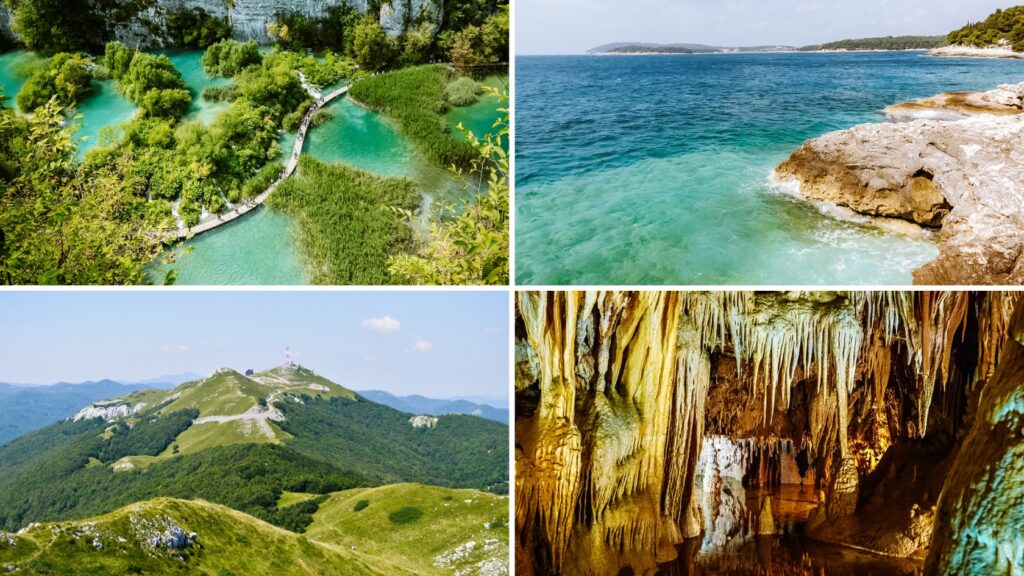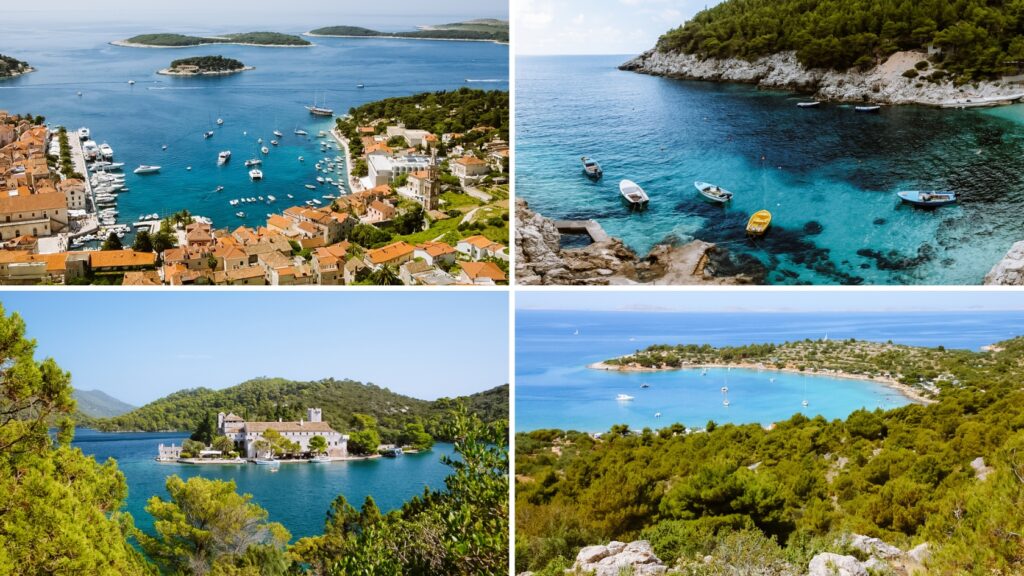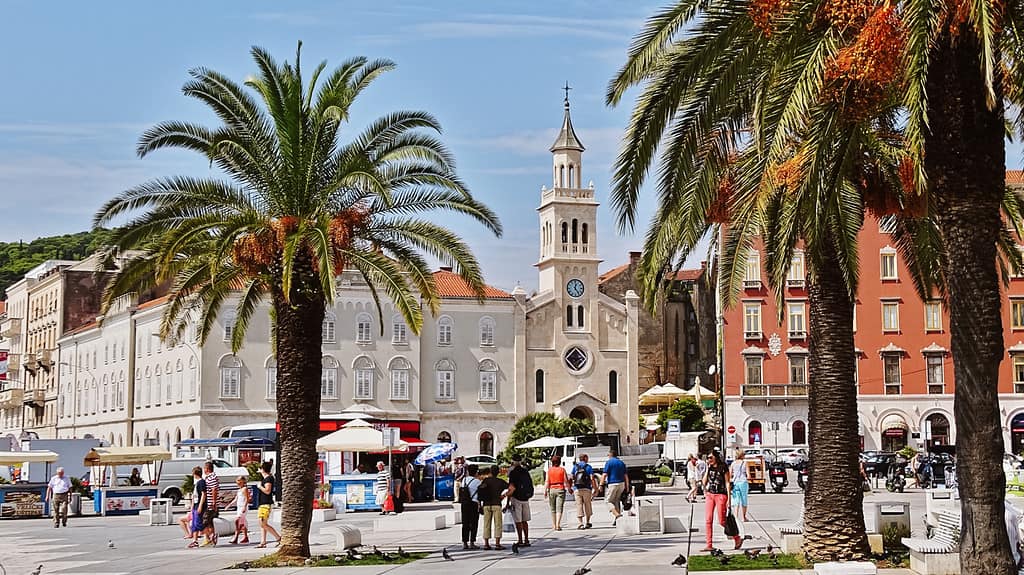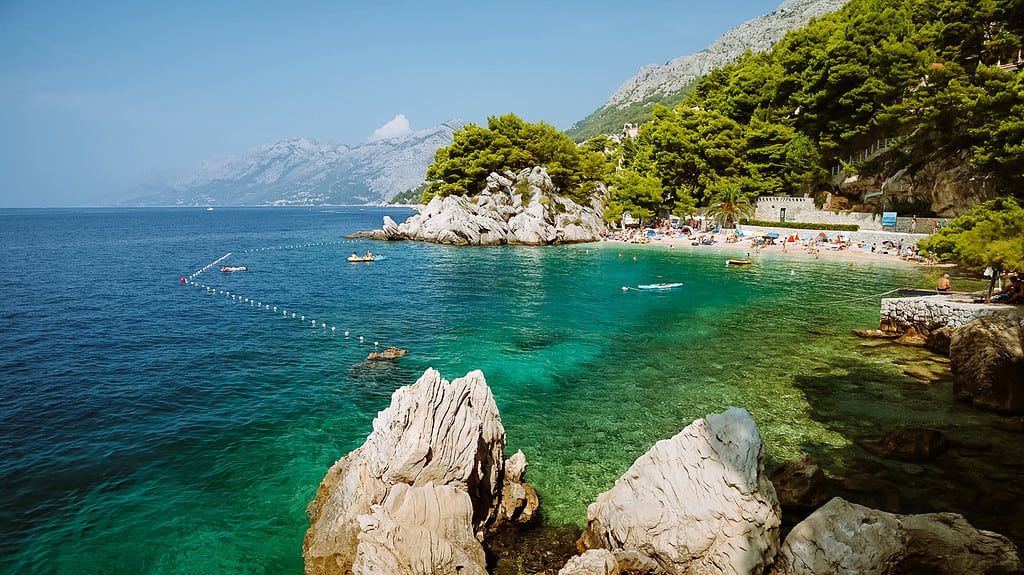TRAVEL GUIDE FOR CROATIA
Discover Croatia, where beautiful beaches, imposing mountains, rich culture and breathtaking sights combine. From the picturesque coastlines with crystal clear waters on the Adriatic Sea to the historical gems of Dubrovnik and Split.
BEST PLACES IN CROATIA
26 Best sea destinations and beach resorts in Croatia
When I think of Croatia, I think of turquoise sea, rocky coastline and…
23 Things to do in Croatia: Best places to visit (+ map)
Croatia is one of the most beautiful countries in Europe, hiding endless coastlines,…
13 The Most Beautiful Croatian islands for holiday in Croatia
The Croatian islands are famous for their clean beaches, turquoise sea and dense…
Split, Croatia: 15 Things to do in Split – travel guide
Thanks to its long history, crystal clear sea and developing gastronomy, Split is…
Makarska Riviera in Croatia (2024): Things to do in Makarska – travel guide
Imagine fine pebble beaches with turquoise blue sea, lush pine forests and seaside…
USEFUL INFORMATION
When to visit Croatia
Croatia is beautiful all year round, but the weather changes throughout the year, so it depends on what you plan to do in Croatia. Here is an overview of what you can expect in each period:
Spring (March to May): Spring is a great time for exploring historic cities, visiting national parks and hiking. Temperatures range from a cooler 15 °C in March to a pleasant 20-25 °C in May. There are fewer tourists and prices are lower than in summer.
Summer (June to August): Summer is perfect for beach holidays, water sports, swimming and diving. Many cultural festivals and evening events are also held at this time. The weather is warm to hot, with temperatures often above 30°C and plenty of sunshine. Check out the best resorts in Croatia.
Autumn (September to November): Autumn is ideal for hiking, cycling and winery tours. The nature turns into a beautiful palette of colours, and the beaches and tourist attractions are not so crowded. Temperatures start around 20-25 °C in September and gradually drop to 15-20 °C in November. The weather is still pleasant, but with a higher probability of precipitation in the later months.
Winter (December to February): Winter is great for visiting cities, culture and historical sites without the crowds. Winter sports can be enjoyed in mountainous areas. On the coast, winters are mild with temperatures around 10-15°C, but inland and in the mountains it can be colder with the possibility of snow.
Transport in Croatia
Public transport
Public transport in Croatia is efficient, comfortable and affordable.
Although the Croatian rail network is not as extensive as in some other European countries, the train service, operated by Hrvatske željeznice (HŽ), connects major cities such as Zagreb, Split and Rijeka.
Bus transport is crucial in Croatia, especially for connecting between cities and reaching remote destinations where trains do not go. An extensive network of buses covers the whole of Croatia, including towns, small villages and tourist locations. Buses are popular for their frequency and availability.
Ferry services are essential for travelling between the Croatian islands and the coast. Ferry companies such as Jadrolinija and Krilo provide regular and reliable connections between the mainland and popular islands including Hvar, Korcula, Brac and many others. More information about the islands in Croatia here.
By car in Croatia
Travelling around Croatia by car is the perfect way to explore the country on your own. It offers unlimited freedom to discover hidden treasures and less touristy sites that are off the main routes.
Road network: the Croatian road network includes modern motorways and smaller roads that take you to all corners of the country, including remote villages, seaside resorts and national parks. Roads in mountainous areas can be narrow and winding, but often offer breathtaking views.
Tolls are collected on most major motorways, such as:
- Tolls are collected on most Croatian motorways. Major highways include:
- The A1 motorway, connecting Zagreb with Dalmatia and offering access to Split.
- The A2 motorway, leading from Zagreb north-west to the Slovenian border.
- The A3 motorway, connecting the east and west of the country, from Belgrade via Zagreb to Slovenia.
- The toll is paid in cash or by card, or you can use the electronic toll option.
Maximum speed limit: The maximum speed limit on Croatian motorways is usually 130 km/h, on main roads 90 km/h and in towns and populated areas 50 km/h, unless otherwise specified.
Parking: In larger cities like Zagreb, Split and Dubrovnik parking can be a challenge, but most cities offer paid parking and special parking zones. In smaller towns and villages, parking is usually easier and often free.
Here you will find our detailed guide to Croatia by car.
Culture and tradition in Croatia
Culture
Croatia’s culture is rich and diverse, going deep into history with an open attitude to new influences and innovations. From the time of the ancient states that spanned what is now Croatia to the traditional Croatian festivals and ceremonies, Croatia has been preserving its cultural heritage for future generations. Its rich history is documented by numerous archaeological sites and museums across the country.
The country is the birthplace of important figures in literature, music and science, including famous historical figures such as Marco Polo, who was born on the island of Korcula, and Nikola Tesla, who has his roots in Smiljan, Croatia.
Support for arts and culture is evident at every turn in Croatia, from music and film festivals such as the world-famous Dubrovnik Summer Festival and Pula Film Festival, to literary evenings and exhibitions in art galleries and museums.
The cultural scene in Croatia is vibrant and dynamic, with traditional art forms such as klapa singing and folk dancing intermingling with modern artistic movements.
Traditions and festivals
One of the most important traditions is Easter, the most important Christian holiday in Croatia. Preparations begin with Holy Week and culminate at midnight on Holy Saturday, when people gather with white candles in squares and churches, waiting for the “Uskrs” (Resurrection), and then illuminate the night with the light of their candles. This is followed by the traditional family lunch on Easter Sunday, at which lamb is served, symbolizing renewal and celebration of life.
Another unique tradition is the Fešta festival, which takes place in many towns and villages throughout Croatia during the summer months. Often associated with the patron saint of a local church or historical events, these celebrations are expressions of a deep sense of spirituality, community and joie de vivre. People come together to eat, drink and dance late into the night.
The family plays a fundamental and central role in Croatian society. Family gatherings, meals and celebrations are an important part of life in Croatia. Large family lunches on Sundays and joint celebrations of holidays such as Christmas, Easter and various patron saints’ days are typical.
It is also common in Croatian society for older family members, such as grandparents, to take an active role in the upbringing of children and to be an important part of family life. This proximity of different generations under one roof or in close proximity helps to keep the family bond strong and alive.
Typical dishes in Croatia
Croatian cuisine is known for its diversity and richness, influenced by its long history and geographical location at the crossroads of different cultures. Each region in Croatia brings its own specific tastes and specialties, from the fresh seafood delicacies of the Dalmatian coast to the hearty meat dishes of the inland and mountainous regions.
Typical and popular dishes you can taste in Croatia include:
- Ćevapi or Ćevapčići – Small grilled rolls of minced meat, served with fresh bread, onions and ajvar.
- Peka – A traditional way of preparing meat or fish with potatoes and vegetables, baked under a bell lid in the heat of coals.
- Risotto – Different types of risotto, often with seafood, are popular all along the coast.
- Brodet – Fish goulash, richly seasoned and served with polenta, is a classic of Dalmatian cuisine.
- Pasticada – Slow roasted beef in a rich sauce, a traditional dish for festive occasions.
- Strukli – Baked or boiled pasta stuffed with cheese, a popular specialty from northern Croatia.
Croatian cuisine emphasises fresh and quality ingredients, including seasonal vegetables, fresh fish and seafood, olive oil and herbs, which give each dish a distinctive and characteristic taste. In recent years, in Croatia, as in other countries, there has been an increased interest in locally and sustainably produced food.
Drinking water in Croatia is generally safe to drink straight from the tap. As for tipping, it is customary in Croatia to round up the bill or leave a small tip (usually around 10%) as a thank you for good service.
☞ See all destinations.
